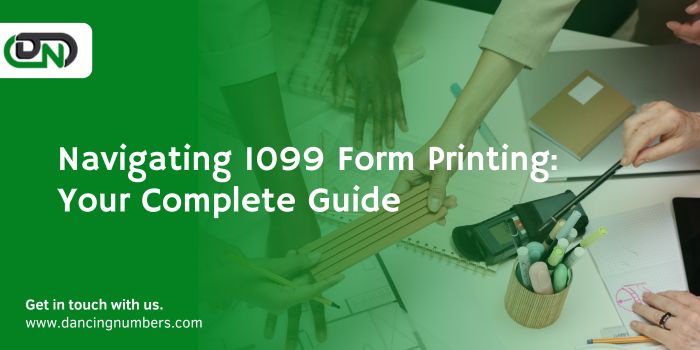As tax season approaches, taxpayers often find themselves grappling with the intricacies of filing their taxes, including the printing of crucial documents such as the 1099 forms. One common query that arises is whether it's permissible to print these forms on plain paper. In this comprehensive guide, we'll delve into this question and provide clear guidance on the matter.
Understanding the Importance of the 1099 Form
Before delving into the specifics of printing, it's essential to grasp the significance of the 1099 form. Essentially, the 1099 form serves as a vital tool for reporting income received throughout the tax year, excluding wages, salaries, and tips. This encompasses various types of earnings, such as interest, dividends, and self-employment income.
Entities responsible for disbursing such income are required to issue 1099 forms to recipients and file copies with the IRS. Recipients then utilize these forms to accurately report their income on their tax returns.
Printing Protocols for 1099 Forms
Now, let's address the burning question: Can you print 1099 forms on plain paper? The concise answer is yes, with certain crucial stipulations. The IRS permits taxpayers to print 1099 forms on plain paper, provided they meet specific requirements.
Adhering to IRS Standards
According to IRS guidelines, if you choose to print 1099 forms on plain paper, they must meet precise standards to be considered acceptable for filing and distribution. These standards encompass:
- Legibility: Ensuring that the printed forms are clear and legible, ensuring that all information is easily discernible.
- Size Specifications: Printing the forms at the actual size stipulated by the IRS, typically 8.5 inches by 11 inches.
- Formatting Precision: Ensuring that the layout and format of the printed forms mirror the official IRS specifications, including the precise placement of boxes, fields, and other essential elements.
- Ink Usage: Employing black ink for printing, as it offers optimal readability and ensures that the forms can be accurately scanned and processed by the IRS.
- Alignment Accuracy: Properly aligning all data fields, including payer and recipient information, as well as income details, on the printed forms.
Harnessing Software Solutions
To streamline the printing process while ensuring compliance with IRS guidelines, many taxpayers opt to utilize specialized tax software or online platforms. These solutions typically provide templates for 1099 forms and automatically populate them with the necessary information, while also ensuring that the forms are printed correctly and meet all IRS requirements.
Benefits of Printing on Plain Paper
Printing 1099 forms on plain paper offers several advantages for taxpayers:
- Cost-Effectiveness: Eliminating the need to purchase pre-printed forms, thus reducing expenses.
- Convenience: Plain paper is readily available and can be printed on demand, providing greater flexibility and convenience.
- Customization Flexibility: Allowing taxpayers to customize the forms to suit their specific needs, such as incorporating additional information or branding.
- Environmental Friendliness: Contributing to waste reduction and environmental preservation by using plain paper instead of pre-printed forms.
Key Considerations
While printing 1099 forms on plain paper is permissible, it's imperative for taxpayers to exercise caution and ensure compliance with IRS guidelines. Failure to adhere to the required standards could lead to processing delays or rejection of the forms by the IRS.
Before proceeding with printing 1099 forms on plain paper, taxpayers should meticulously review IRS specifications and consider employing software solutions to simplify the process and ensure accuracy. By adhering to these guidelines, taxpayers can effectively report their income and fulfill their tax obligations without the need for expensive pre-printed forms.
Conclusion
while printing 1099 forms on plain paper is allowed, it's crucial to adhere to IRS requirements. With careful attention to detail and the right approach, printing 1099 forms on plain paper can be a cost-effective and efficient option for taxpayers during tax season.


No comments yet